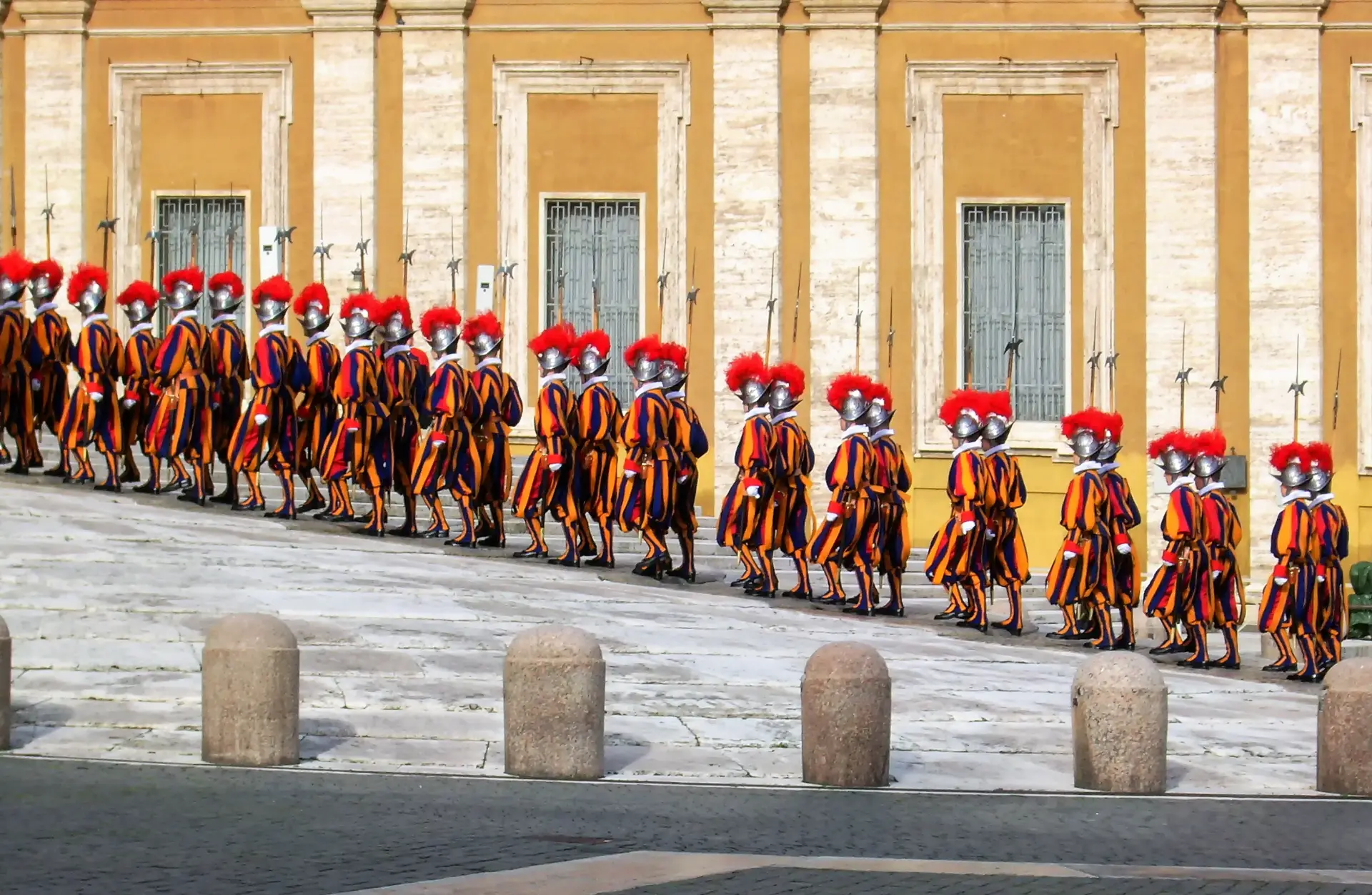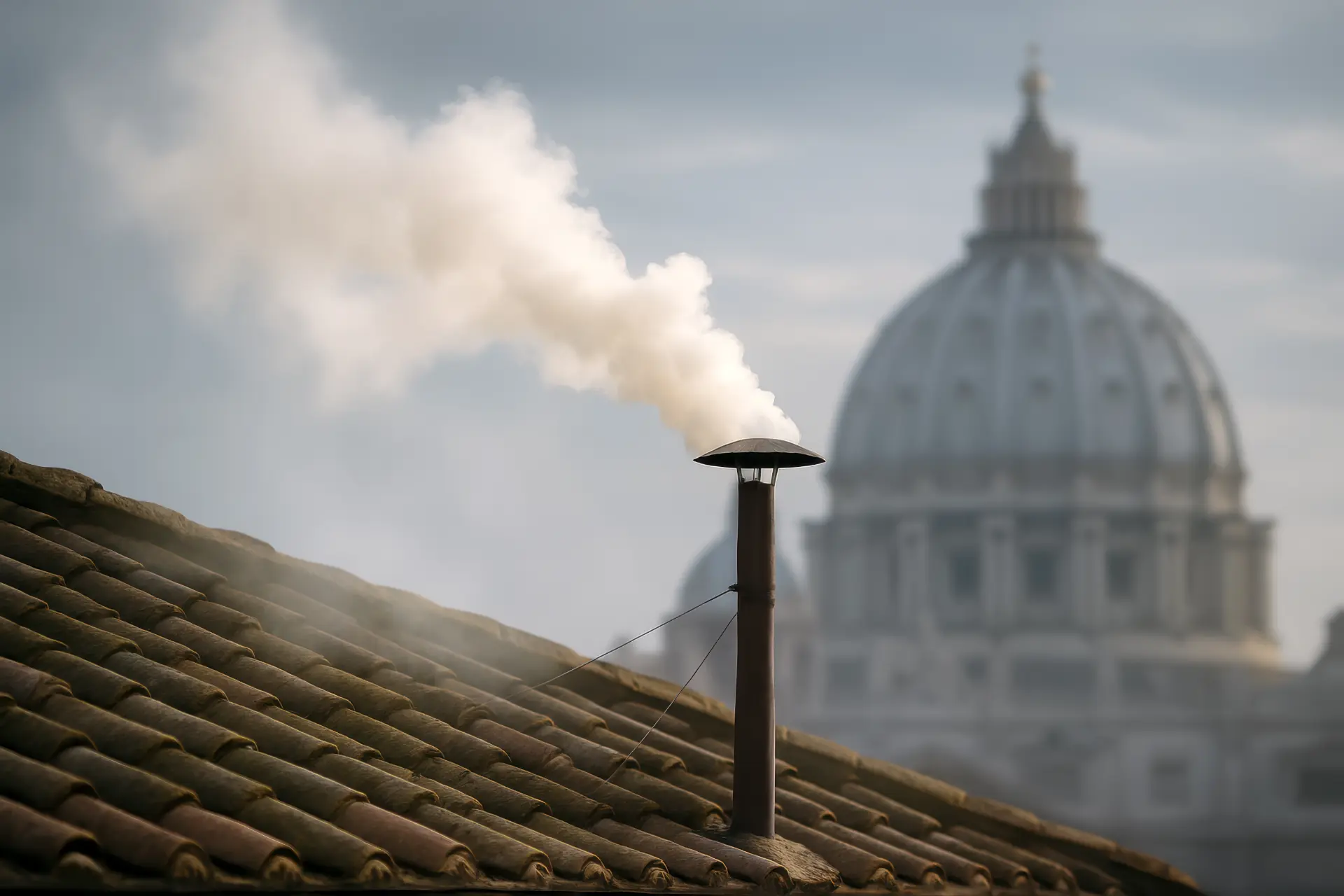Table of contents
- The conclave: tradition and confidentiality
- Digital threats to the conclave
- Security measures adopted
- The role of media and social networks
- International collaboration
The election of a new pope is one of the most solemn and secretive events in the Catholic Church. However, in the digital age, even the conclave is not immune to the challenges posed by cyber security.
This article explores how the web and modern technologies could influence the decisions of cardinals during the selection of the new pontiff, analyzing the risks and proposing solutions to ensure the integrity of the electoral process.
The conclave: tradition and confidentiality
The conclave is one of the oldest and most solemn rites of the Catholic Church. It was created to guarantee the maximum freedom of choice for the cardinal electors, shielding them from any political, media, or external pressure.
This need became particularly evident after historical episodes where monarchs or political forces attempted to interfere with papal elections.
The word “conclave” comes from the Latin cum clave (“with a key”), reflecting the requirement that cardinals be locked in until they had chosen the new pope. As early as the 13th century, following a nearly three-year papal vacancy after the death of Pope Clement IV, Pope Gregory X established strict conclave rules through the constitution Ubi Periculum (1274), which included:
- Physical isolation of cardinals in a secured location.
- Absolute ban on external communications to prevent political pressure.
- Severe penalties (up to excommunication) for anyone who violated electoral secrecy.
These rules, although updated over time, are still enforced today.
The 2005 Conclave Example
During the 2005 conclave that elected Pope Benedict XVI, the Vatican faced the new threats of the modern digital age. At that time:
- Anti-spy devices were installed inside the Sistine Chapel to detect hidden microphones and unauthorized radio transmissions.
- Electronic inspections of cardinals’ belongings were conducted to find any data transmission equipment.
- Enhanced cyber security monitoring was deployed on Vatican networks to prevent hacking attempts or information leaks.
In addition, traditional measures were strongly reaffirmed:
- Cardinals reside in the Domus Sanctae Marthae, a protected residence inside Vatican City.
- They meet exclusively in the Sistine Chapel for voting, without access to telephones, computers, or the internet.
- The voting results are communicated only via the ritual of black smoke (no election) or white smoke (pope elected).
Challenges of the Modern Age
Today, the traditions of the conclave must face:
- Micro-listening devices smaller than a coin;
- Malware that can turn seemingly harmless devices into espionage tools;
- Social networks that, although off-limits to cardinals, can generate psychological pressure through global media narratives.
In an age of hyperconnectivity, just a few seconds could jeopardize the confidentiality of an election meant to be sacred and secret. The Vatican’s challenge is thus to update its ancient procedures without compromising the spiritual nature of the papal election.
Digital threats to the conclave
The election of a new pope, despite taking place within an ancient and rigorously controlled framework, is not immune to the dangers of the digital era. Today, several cyber security risks could threaten the integrity and confidentiality of the conclave.
External interference
One of the gravest threats comes from external interference orchestrated by:
- State actors who view the papal election as a matter of geopolitical interest;
- Hacker groups driven by ideological, political, or economic motivations.
Through sophisticated targeted cyberattacks, these entities could attempt to:
- Steal confidential information about voting dynamics and candidates;
- Manipulate the cardinals, spreading partial, fake, or compromising information to influence the election outcome;
- Destabilize the election process, causing confusion and eroding trust within and outside the Church.
Real-world example
During globally significant events such as World Youth Day (WYD), the Vatican’s official websites have been targeted by DDoS attacks (Distributed Denial of Service), aimed at overwhelming servers and disrupting communications. Such incidents prove that religious events are not beyond the reach of hostile digital actions.
Electronic surveillance
Inside the Sistine Chapel itself, the threat of electronic surveillance remains real. Even in meticulously controlled environments, increasingly miniaturized technology can infiltrate:
- Liturgical books, hiding miniature microphones within pages or bindings;
- Sacred furnishings, concealing eavesdropping devices in innocuous objects;
- Ceremonial garments, sewing sensors or micro-transmitters into cassocks or stoles.
Case study: in 2015, a listening device was discovered inside the offices of the Governorate of Vatican City State. This real-world incident demonstrated that even the holiest and most protected places are not immune to sophisticated surveillance attempts.
Media manipulation
Another growing threat involves the manipulation of information via traditional media and social networks. Although the cardinals are physically isolated, the external environment surrounding the conclave can be heavily influenced by:
- Coordinated fake news campaigns aimed at undermining or promoting certain candidates;
- Polarized narratives that create internal and external tensions;
- Indirect pressures transmitted through unofficial channels.
Practical example
Imagine a series of coordinated social media campaigns using bots and fake accounts to spread either praise or defamation about a cardinal.Even if the cardinals themselves have no direct access to the internet, the media atmosphere can reach them indirectly through family members, diplomats, or journalists, subtly influencing the psychological environment of the election.

Security measures adopted
In response to the evolving nature of digital threats, the Vatican has implemented a comprehensive set of security measures to safeguard the conclave’s integrity.
These strategies aim to prevent any form of electronic intrusion, surveillance, or information manipulation.
Blocking communications
A top priority is the complete shutdown of electronic communications within the conclave area. To achieve this, the Vatican deploys:
- High-power jammers capable of neutralizing Wi-Fi, Bluetooth, and GSM (cellular) signals;
- Physical barriers designed to block wireless transmissions;
- RF scanners (Radio Frequency scanners) to detect unauthorized transmitting devices.
Technical example
During the 2013 conclave that elected Pope Francis, the Vatican created actual digital “black holes” around and inside the Sistine Chapel.These systems generated an electromagnetic void, making it impossible for any device, even a satellite phone, to transmit or receive data from inside the conclave.
Rigorous inspections
Another cornerstone of conclave security lies in rigorous inspections of all environments, objects, and individuals. Key procedures include:
- High-sensitivity scanners used to inspect cardinals, staff, and personal belongings before accessing the Sistine Chapel;
- Continuous electronic countermeasure sweeps (TSCM – Technical Surveillance Counter Measures) to detect hidden bugs, micro-cameras, or unauthorized radio frequency emissions;
- Manual inspections of liturgical vestments and sacred furnishings.
Importantly, these security sweeps are not conducted just once before the conclave begins but are repeated throughout the voting days to ensure no devices have been introduced afterward.
Personnel training
Human awareness is a fundamental line of defense. For this reason, the Vatican invests heavily in training:
- Conclave support staff attend cyber security courses to learn how to recognize suspicious behaviors, avoid social engineering traps, and respond swiftly to any security incident;
- Cardinals receive special briefing sessions on the most common digital threats, including:
- Phishing, attempts to steal sensitive information through deceptive emails or messages;
- Spear phishing, highly targeted attacks impersonating trusted individuals to build credibility.
The goal: ensure that every participant is not only physically isolated but also mentally equipped to recognize and counteract potential compromise attempts.
The role of media and social networks
Even though the cardinals are physically isolated from the outside world during the conclave, they cannot be entirely shielded from the media influence generated around them. We live in an era where digital noise produced by traditional media, social networks, and news platforms has the power to:
- Shape the public image of papal candidates;
- Indirectly influence the psychological environment of the papal election.
How external influence happens
Although cardinals are forbidden from any external communication during the conclave, it is important to recognize that:
- Before entering the conclave, cardinals have contacts with friends, family, collaborators, or diplomatic representatives.
- These people, often unknowingly, can transmit opinions, rumors, or sentiments gathered from social media and news outlets.
- Media and communication campaigns, even if indirect, can alter the mental framework that cardinals bring with them into Vatican City.
Practical example
Imagine that on platforms like X (formerly Twitter) or Facebook, a hashtag such as #Pope2025 becomes viral, heavily associated with a specific candidate. If that hashtag trends worldwide:
- Public opinion becomes polarized;
- Newspapers daily report preferences and speculations;
- Cardinals, although cut off from direct access, might hear about such a “favorable wind” through secondary sources, unconsciously affecting their deliberations.
Disinformation: a new weapon
Disinformation today is regarded as one of the most powerful tools of modern warfare. It no longer relies solely on military invasions but thrives through:
- Manipulated narratives;
- Strategically created fake news;
- Guided public emotions channeled through digital platforms.
Even the conclave—one of the most spiritual and sacred events—could become a target of these strategies, emphasizing the need for vigilant monitoring of the media landscape before and during the papal election.
International collaboration
Modern-day conclave security cannot rely solely on internal measures. Given the global nature of cyber threats, international collaboration with institutions, cyber security experts, and governments has become essential.
Key participants
To ensure the complete protection of the election process, the Vatican works in cooperation with:
- Intelligence agencies, which provide early warnings about potential threats from states or hostile organizations;
- Cyber security agencies, specializing in vulnerability assessments, network traffic monitoring, and system defense;
- Specialized intelligence bodies, capable of detecting disinformation campaigns and espionage attempts before they become operational.
This network of partnerships allows for continuous global monitoring, enabling threats to be anticipated, neutralized, or quickly responded to.
Real-world example
In 2023, the Vatican established a collaboration with ENISA (European Union Agency for Cyber security) ahead of significant religious events. The main goals of this partnership were to:
- Enhance the Vatican’s cyber security defenses;
- Secure confidential communications;
- Train personnel in cyber incident response protocols.
Thanks to this collaboration, the Vatican adopted cutting-edge technologies and cyber security methodologies aligned with international best practices.
Red teaming: simulating attacks
One of the most effective strategies employed is the deployment of “Red Teams”, composed of:
- Ethical hackers who simulate real-world cyberattacks against Vatican systems;
- Practical exercises that test system resilience and uncover vulnerabilities;
- Phishing simulations, intrusion attempts, and full-scale cyber crisis scenarios.
Through these exercises, the Vatican can:
- Assess the effectiveness of its countermeasures;
- Improve incident response times;
- Strengthen the cyber security awareness of conclave personnel.
In a global environment where threats constantly evolve, international cooperation and proactive strategies remain crucial for ensuring the conclave’s complete protection.
Questions and answers
- What are the main digital threats to the conclave?
Major threats include external interferences, electronic surveillance, and media manipulation. - How does the Vatican protect the conclave from digital threats?
Through communication blocks, strict inspections, and staff training. - Can social networks influence the papal election?
Yes, spreading information through social media can pressure the cardinals. - Does the Vatican collaborate with external cyber security experts?
Yes, international collaboration is vital to tackling digital threats. - What technologies are used to protect the conclave?
Communication blocking devices, advanced surveillance systems, and cyber security software. - How are sensitive information and confidentiality managed during the conclave?
With strict security protocols and trained personnel. - Are there any precedents of digital attacks on the conclave?
No concrete evidence exists, but the risk is taken very seriously. - What role do media outlets play during the papal election?
To inform the public, although they can also spread misinformation. - How is the cardinals’ confidentiality guaranteed?
Through physical isolation and a strict ban on external communications. - Is cyber security a priority for the Vatican?
Yes, especially during critical events like the conclave.
